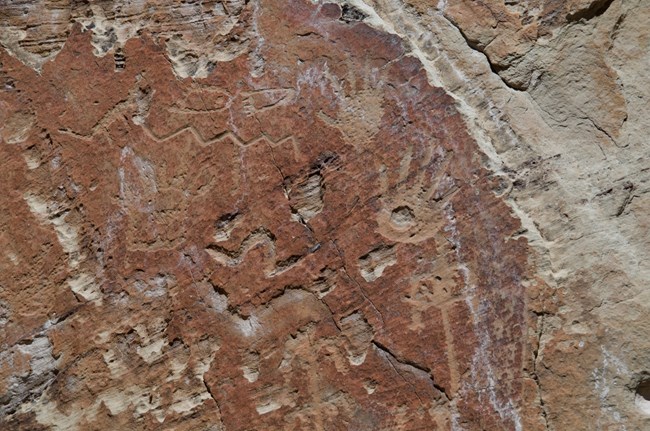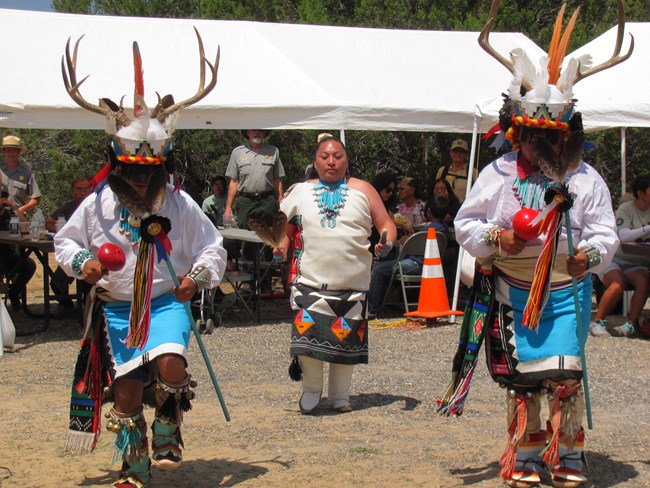
NPS Photo Ancient VillagersVillages AriseEmerging from a hunter-gatherer culture some 2,000 year ago, the ancestral Puebloans were agriculturalists who built small villages along streams throughout the Southwest. Here they would grow crops such as maize, beans, and squash, in addition to harvesting native plants and hunting. Eventually these small pueblos would evolve into larger dwellings with thriving communities throughout the El Morro valley. 
NPS Photo/J.Ellis Messages Left BehindThe rock markings the ancestral Puebloans left behind are a language that may communicate both the mundane and the spiritual. Petroglyphs found throughout the monument depict different cultures, ideas, and messages over hundreds of years. Created by pecking the rock surface using a chisel or antler, these messages have withstood the passing of time. Some 200 petroglyphs are protected within El Morro, in addition to several pictographs, or rock paintings, many of which can be viewed from the Inscription Loop Trail. 
NPS Photo Connections TodayFor many Indigenous people, Atsinna and related sites continue to be important places to them-part of their larger homelands that once stretched far beyond the boundaries seen today. |
Last updated: November 20, 2023
